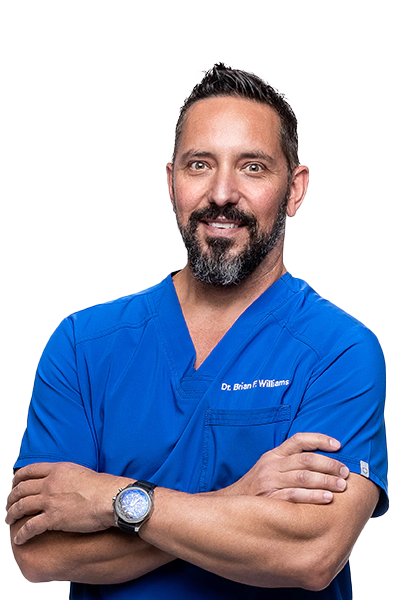How Is Dry Eye Diagnosed?
Dr. Williams will conduct a series of evaluations that include an examination of the Meibomian Glands to determine the likely cause of your Dry Eye symptoms. Even though Dry Eye is usually a chronic condition, there are several treatment options your doctor can prescribe.
- Your doctor may suggest using preservative-free artificial tears as they have fewer ingredients that could further irritate your eyes. Sometimes patients will not have their symptoms resolved with artificial tears alone.
- Adjusting your diet or taking supplements high in omega 3 and omega 6 fatty acids may help lower the risk of developing dry eye syndrome.
- Punctal plugs may be used to try and keep the tears in your eye longer. This is done by blocking the drainage area of the eye by inserting little “plugs” into the tear ducts. Punctal plugs can also be removed if they are ineffective or overly bothersome.
- Prescription eye drops help to increase the amount of tears your eyes produce.
- If you have an eyelid condition, you may need your eyelid(s) surgically repaired. If, however, they are inflamed because of blepharitis, warm lid compresses or oral antibiotics may be all that’s needed.
Is it Dry Eye or MGD?
There are roughly 30 million people in the United States and over 300 million worldwide who have been diagnosed with dry eye. Most have learned to live with eye discomfort and have become dependent on drops or other treatment methods that only offer temporary relief. This has been due to a lack of understanding that the root cause of most dry eye (86%) is now known to be a chronic and progressive condition, Meibomian Gland Dysfunction or MGD.
Identifying MGD
A series of evaluations will be performed to determine if you have MGD. This can include a LipiView® tear film and gland imaging and a Meibomian Gland evaluation. Knowing what is causing your Dry Eye will help your doctor determine the best treatment option.
The tear film can be clearly seen as an array of colors that are reflected when a light source is directed towards the front surface of the eye. Readings are instantly calculated and displayed on the LipiView® monitor.
The following conditions may affect the assessment of a patient’s tear film using the LipiView®:
- Use of ophthalmic drops such as artificial tear lubricants, ointments, and medications. Patients should not use oil-based ophthalmic drops (e.g., Soothe®, Restasis®) for at least 12 hours prior to LipiView® assessment. Patients should not use ointments for at least 24 hours prior to LipiView® use. Patients should wait at least 4 hours after the instillation of all other ophthalmic drops prior to LipiView® use.
- Soft or rigid contact lens wear. Patients should remove contact lenses at least 4 hours prior to device use.
- Use of oil-based facial cosmetics around the eye.
- Eye rubbing.
- Recent swimming in a chlorinated pool. Patients should not swim for at least 12 hours prior to LipiView® use.
- Any ocular surface condition that affects the stability of the tear film. These conditions include disease, dystrophy, trauma, scarring, surgery, or abnormality.
Meet Your Doctor

Brian F. Williams, O.D.
Board Certified Optometrist
A Board Certified Optometrist and co-owner of EyeCare Associates, Dr. Williams specializes in ocular disease with a wide range of technical training and experience. He is certified in and routinely performs anterior segment laser procedures, Yag laser procedures, photo refractive keratectomy (PRK), glaucoma-related laser treatments, and minor in-office surgical procedures. In addition to his 19 years of clinical experience, Dr. Williams is an experienced lecturer on subjects such as ocular disease, glaucoma, diabetes, and laser vision correction. He is one of the first doctors in Oklahoma using the SmartV laser for vitreolysis in eye floater removal. A past Director of the Oklahoma Optometric Association and a member of the American Academy of Optometry, Dr. Williams is actively involved with the optometric community. He is passionate about caring for his patients and is dedicated to providing the best vision care available.
An Oklahoma native, Dr. Williams was raised in a small farming community in southwest Oklahoma. He earned his Bachelor’s Degree from Southwestern State University and then graduated from Northeastern State University School of Optometry in 1994. Upon graduation, he completed a residency in ocular disease and refractive surgery in an ambulatory surgical center in Tulsa.
Dr. Williams is a member of the Tulsa Executives Association and a volunteer with Big Brothers and Big Sisters of Oklahoma where he has been a “big brother” for more than 20 years.

